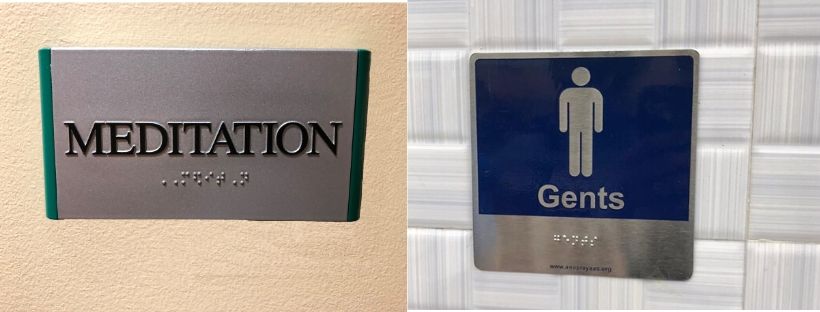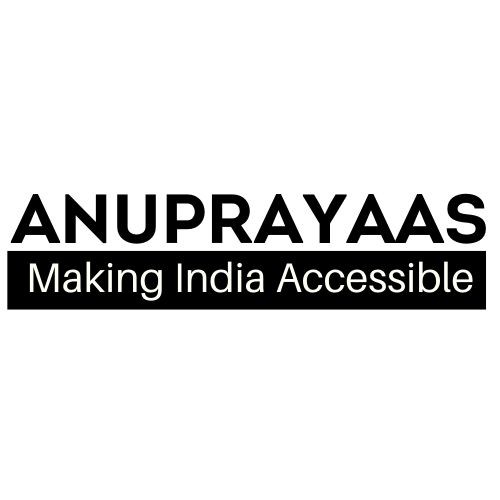8 Ways to Make Your Workplace Accessible and Disability Friendly
23
June, 2020
An accessible workplace is quite necessary as it provides an environment in which the employees are able to perform their essential job function with all their potential regardless of their disability.
People with disability are as effective as sighted people, yet they experience exclusion at some level – both in jobs and in the workplace itself. It is absolutely necessary for an organization to make them feel welcomed.
Every organization must take an initiative to make their facilities inclusive to ensure safety and accessibility to all participants who are on Wheelchair, blind or visually impaired or using Prosthetic. It doesn’t require a great deal of time or a lot of money.
Take following Steps to make a Workplace Accessible to all:
- Make sure your office has Ramps & Lifts: Small modifications to the environment will do wonders for the people with disability to bring out the best in them. A workspace that can be easily navigated is a must. Make sure your office premises has ramps & lifts that help easy movement for wheelchair users throughout the campus premises. You can also provide portable ramps or wooden ramps that can be easily installed without requiring any additional construction.

2. Provide Accessible Toilets: A already built toilet can be converted to an accessible toilet if it has enough space for movement of a wheelchair. Install Grab bars, an accessible toilet seat and make sure that the height of at least one wash basin is comfortable for wheelchair users.

3. Use Contrast Colors : Different types of lighting and Contrasting colors allows a person with limited sight to identify different surfaces. For example, a colored strip along the edge of each stair will help the employee more easily find and navigate the stairs with a reduced risk of falling. Door frames shall be in a color that contrasts with the wall also helps an individual with some vision to enter and exit more easily. Plenty of lighting in the work area aids in work tasks.

4. Provide Braille Signs: The addition of Braille lettering to signs and office equipment like the copy machine allows the employee to be self-sufficient for daily work tasks. Braille signs for various offices, Washrooms, Lifts etc., empowers people with visual disability to move around with minimal assistance.

5. Provide Tactile Flooring: Tactile tiles are raised tiles with specific patterns used for providing assistance in navigation for people who are blind. This should be included while designing the flooring of a building during construction. However, there are various alternatives available today in market that can be installed over a floor surface without any hassle. These include both metallic and rubber stick-on tactile tiles. Moreover, there should be no clutter, and walkways should be clear of obstructions to avoid accidents. Documents and resources should be well-organized, and physically accessible without barriers.

6. Obtain the Right Technology:
Computers and mobile phone have become ubiquitous in the modern office environment. A person with a visual impairment will likely need special software to effectively use a computer. Screen-reading software reads the information on the screen so the employee is able to use it. Some programs also allow the user to speak into a microphone or headset to type or control the computer. If the impairment is minor, the employee may be able to see the screen with a special magnifier that goes in front of the computer screen. Also, providing telephones with large print keypads and Braille Keypads if required is a good practice.

7. Make sure to have Alternative Formats for Documents.
To read documents in written form, whether paperwork, manuals and any other written information, alternative formatting becomes necessary so the vision-impaired employee can access the information on his own.For an employee who is not completely blind, a large-print version or magnifying machine may be an option too. Others may require versions of documents in Braille, audio recorded or on the computer where he can use the screen-reading pro

8. Create an environment where everybody is involved socially.
Make sure that every individual introduces him/ herself in a meeting so that a person with a visual disability will get to know who is in the attendance and where exactly each and every person is sitting. If someone has to leave the room mid-meeting, acknowledge this with a brief mention so that everybody understands who is still present. Train your employees on best practices for approaching their new co-workers. It’s important that employees realize the disability does not define their new co-worker. Their new co-worker was hired on the merits of his/her skills, so there should be no question of their ability to perform the assigned job.

It’s always best to ask your new employee for help with any necessary accommodations. It will help you understand there needs better and make them feel welcomed by the organization.
– Shreya S Kajur
